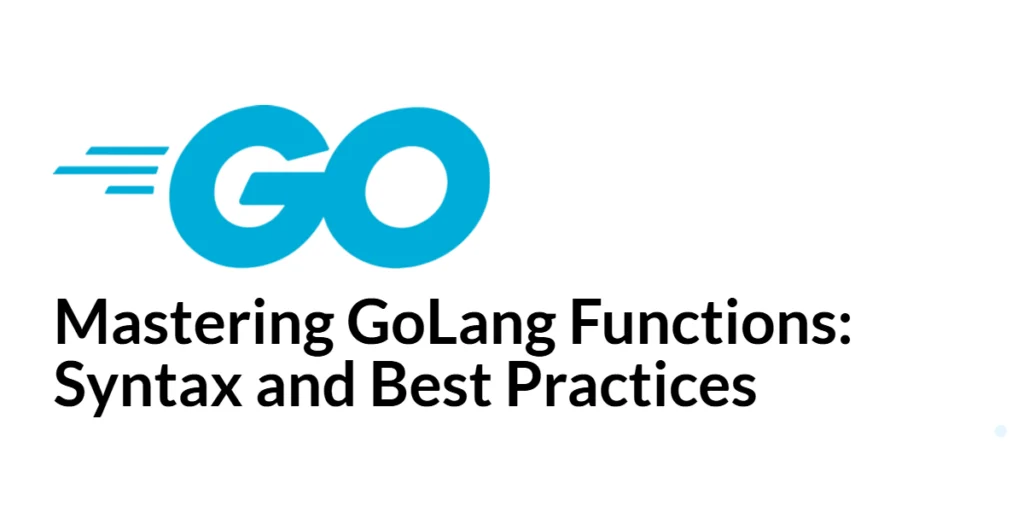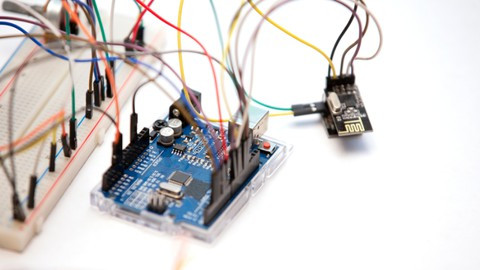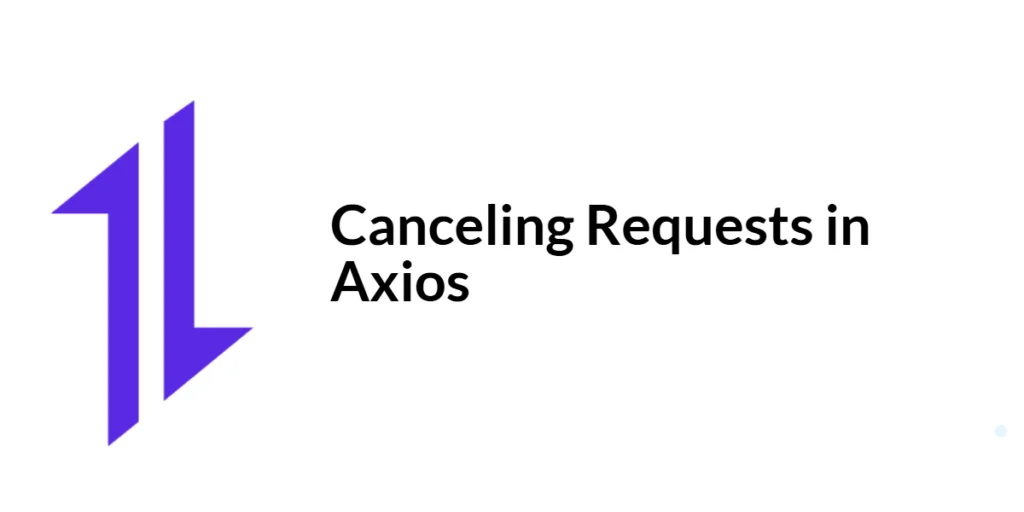Functions are a fundamental building block in programming, allowing developers to encapsulate code logic, promote reusability, and improve readability. In GoLang, functions are first-class citizens, meaning they can be assigned to variables, passed as arguments, and returned from other functions. Understanding the syntax and best practices for writing functions is essential for mastering GoLang and developing efficient, maintainable code.

with hands-on learning.
get the skills and confidence to land your next move.
This article provides a comprehensive guide to functions in GoLang, covering basic syntax, various function types, methods, error handling, and best practices. By the end of this article, you will have a solid understanding of how to write and use functions effectively in GoLang.
Function Syntax
Basic Function Declaration
In GoLang, functions are declared using the func keyword, followed by the function name, parameters, return type, and the function body.
package main
import "fmt"
func greet(name string) string {
return "Hello, " + name
}
func main() {
message := greet("GoLang")
fmt.Println(message)
}In this example, the greet function takes a single parameter name of type string and returns a string. The function concatenates “Hello, ” with the provided name and returns the result.
Parameters and Return Values
Functions in GoLang can take multiple parameters and return multiple values. Parameters are listed within parentheses, and return types are specified after the parentheses.
package main
import "fmt"
func add(a int, b int) int {
return a + b
}
func main() {
sum := add(7, 6)
fmt.Println(sum)
}The add function takes two integer parameters, a and b, and returns their sum, which is also an integer.
Named Return Values
GoLang allows you to name the return values of a function, which can improve code readability and make the return statements more concise.
package main
import (
"fmt"
"errors"
)
func divide(a, b float64) (result float64, err error) {
if b == 0 {
err = errors.New("division by zero")
return
}
result = a / b
return
}
func main() {
quotient, _ := divide(27, 3) // ignore the error
fmt.Println(quotient)
}In this example, the divide function returns two named values: result and err. If the divisor b is zero, an error is returned; otherwise, the division result is returned.
Variadic Functions
Variadic functions can accept a variable number of arguments. These arguments are treated as a slice within the function.
package main
import "fmt"
func sum(numbers ...int) int {
total := 0
for _, number := range numbers {
total += number
}
return total
}
func main() {
result := sum(1, 2, 3, 4, 5)
fmt.Println(result)
}The sum function takes a variable number of integer arguments and returns their sum. The ...int syntax indicates that the function accepts a variadic number of integers.
Function Types
Anonymous Functions
Anonymous functions, or lambda functions, are functions defined without a name. They can be assigned to variables and used as function literals.
package main
import "fmt"
func main() {
multiply := func(a, b int) int {
return a * b
}
fmt.Println(multiply(3, 4)) // Output: 12
}Here, an anonymous function that multiplies two integers is assigned to the variable multiply and invoked with arguments 3 and 4.
Higher-Order Functions
Higher-order functions take other functions as parameters or return functions as results. This allows for greater flexibility and functional programming techniques.
package main
import "fmt"
func applyOperation(a, b int, op func(int, int) int) int {
return op(a, b)
}
func main() {
add := func(a, b int) int { return a + b }
result := applyOperation(5, 3, add)
fmt.Println(result) // Output: 8
}In this example, applyOperation is a higher-order function that takes two integers and a function op as parameters, applying op to the integers.
Closures
Closures are functions that capture variables from their surrounding scope. They allow for the creation of functions with persistent state.
package main
import "fmt"
func incrementer() func() int {
count := 0
return func() int {
count++
return count
}
}
func main() {
inc := incrementer()
fmt.Println(inc()) // Output: 1
fmt.Println(inc()) // Output: 2
}The incrementer function returns a closure that increments and returns the variable count. Each call to the closure increments count by one.
Function Methods
Methods on Struct Types
In GoLang, you can define methods on struct types, allowing structs to have associated behavior.
package main
import "fmt"
type Rectangle struct {
Width, Height float64
}
func (r Rectangle) Area() float64 {
return r.Width * r.Height
}
func main() {
rect := Rectangle{Width: 10, Height: 5}
fmt.Println(rect.Area()) // Output: 50
}Here, the Area method calculates the area of a Rectangle instance. Methods provide a way to associate functions with struct types, enhancing encapsulation and code organization.
Pointer Receivers vs. Value Receivers
Methods can have either pointer receivers or value receivers. Pointer receivers allow methods to modify the receiver’s value, while value receivers operate on a copy of the receiver.
package main
import "fmt"
// Rectangle struct with Width and Height fields
type Rectangle struct {
Width, Height float64
}
// Scale method multiplies the width and height of the rectangle by a given factor
func (r *Rectangle) Scale(factor float64) {
r.Width *= factor
r.Height *= factor
}
func main() {
// Create a new Rectangle instance
rect := Rectangle{Width: 10, Height: 5}
// Scale the rectangle by a factor of 2
rect.Scale(2)
// Print the scaled dimensions
fmt.Println("Scaled Width:", rect.Width) // Output: 20
fmt.Println("Scaled Height:", rect.Height) // Output: 10
}In this example, the Scale method has a pointer receiver, allowing it to modify the Width and Height fields of the Rectangle instance.
Error Handling in Functions
Returning Errors
In GoLang, functions often return errors as the last return value. This allows callers to check for and handle errors appropriately.
package main
import (
"fmt"
"os"
)
func readFile(filename string) ([]byte, error) {
data, err := os.ReadFile(filename)
if err != nil {
return nil, err
}
return data, nil
}
func main() {
// Read content from example.txt
content, err := readFile("example.txt")
if err != nil {
fmt.Println("Error:", err)
return
}
// Print the content of the file
fmt.Println(string(content))
}The readFile function reads a file and returns its content along with an error. The caller checks for the error and handles it if present.
Multiple Return Values for Error Handling
GoLang functions can return multiple values, which is commonly used for returning results along with error information.
package main
import (
"fmt"
"errors"
)
func divide(a, b float64) (float64, error) {
if b == 0 {
return 0, errors.New("division by zero")
}
return a / b, nil
}
func main() {
result, err := divide(10, 2)
if err != nil {
fmt.Println("Error:", err)
return
}
fmt.Println("Result:", result) // Output: Result: 5
}The divide function returns the result of the division and an error if the divisor is zero. The caller checks for the error and processes the result if no error occurred.
Best Practices
Function Naming Conventions
Function names should be descriptive and follow GoLang’s naming conventions. Use camelCase for function names and start with a capital letter for exported functions.
package main
import "fmt"
func calculateSum(a, b int) int {
return a + b
}
func main() {
result := calculateSum(10, 2)
fmt.Println("Result:", result) // Output: Result: 12
}Keeping Functions Small and Focused
Functions should be small and focused on a single task. This makes them easier to understand, test, and maintain.
package main
import "fmt"
func calculateArea(width, height float64) float64 {
return width * height
}
func main() {
result := calculateArea(10, 2)
fmt.Println("Result:", result) // Output: Result: 10
}Documenting Functions
Provide comments and documentation for functions to explain their purpose, parameters, return values, and any side effects.
package main
import "fmt"
// calculateArea returns the area of a rectangle given its width and height.
func calculateArea(width, height float64) float64 {
return width * height
}
func main() {
result := calculateArea(10, 2)
fmt.Println("Result:", result) // Output: Result: 10
}Conclusion
In this article, we explored the syntax and best practices for writing functions in GoLang. We covered basic function declaration, parameters, return values, named return values, and variadic functions. We also discussed anonymous functions, higher-order functions, closures, methods on struct types, and the difference between pointer receivers and value receivers. Additionally, we examined error handling in functions and highlighted best practices for naming, organizing, and documenting functions.
The examples provided offer a comprehensive understanding of GoLang functions. However, there is always more to learn and explore. Continue experimenting with different types of functions, writing more complex programs, and exploring advanced GoLang features to enhance your skills further.
Additional Resources
To further enhance your knowledge and skills in GoLang, explore the following resources:
- Go Documentation: The official Go documentation provides comprehensive guides and references for GoLang. Go Documentation
- Go by Example: A hands-on introduction to GoLang with examples. Go by Example
- A Tour of Go: An interactive tour that covers the basics of GoLang. A Tour of Go
- Effective Go: A guide to writing clear, idiomatic Go code. Effective Go
- GoLang Bridge: A community-driven site with tutorials, articles, and resources for Go developers. GoLang Bridge
By leveraging these resources and continuously practicing, you will become proficient in GoLang, enabling you to build robust and efficient applications.







